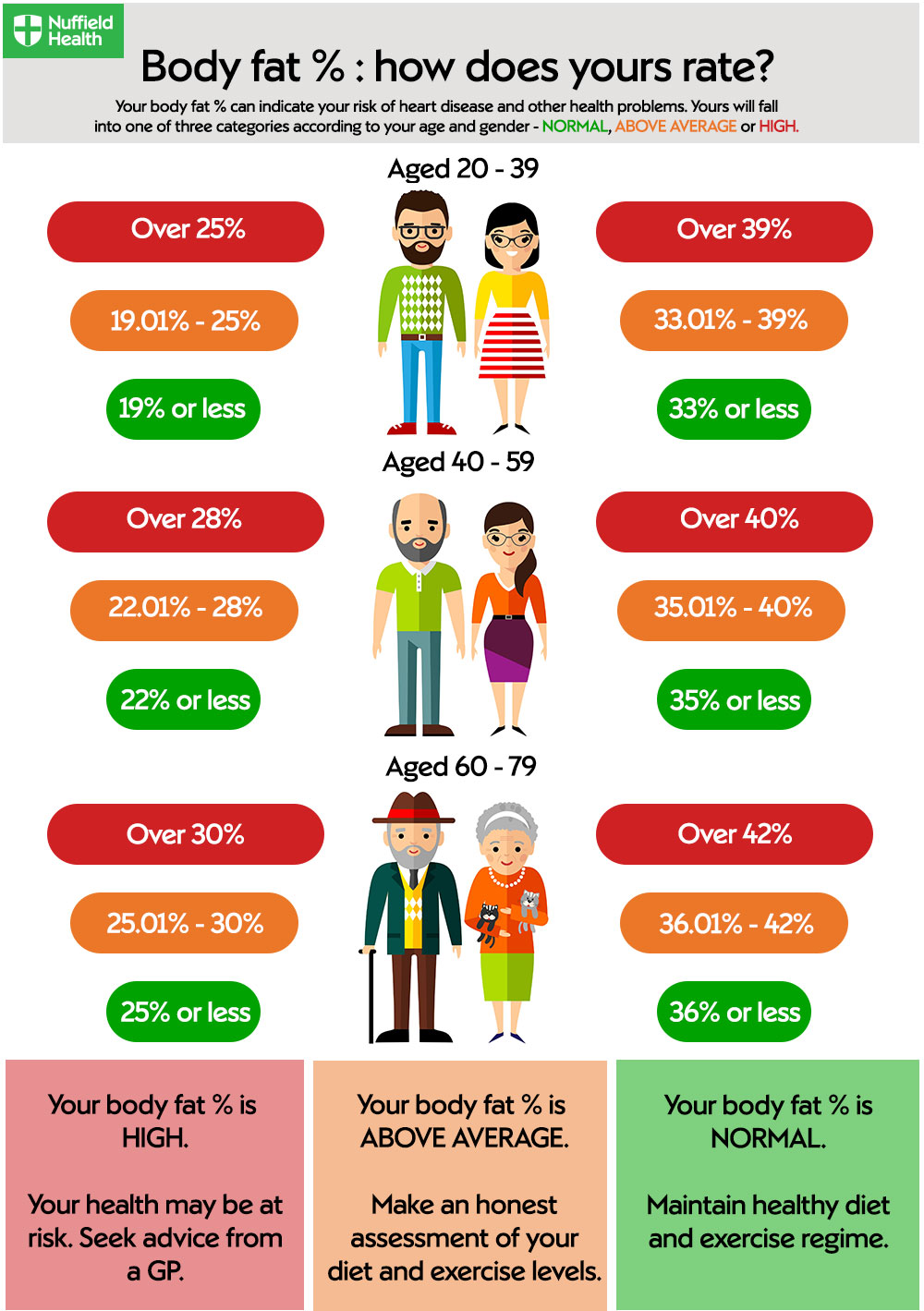Body fat percentage: the hidden health number
- Overview
Body mass index (BMI), while still useful, has come under increasing scrutiny for not being a full representation of body composition or health. Today, advances in technology allow us to look deep inside the body to figure out how much of it is fat.
Why is body fat percentage important?
Like high BMI, having above average body fat percentage increases your risk of heart disease, diabetes and other chronic conditions. So it’s important to know this figure alongside BMI even if your weight is classed as normal.

The fat you can see, the stuff that gathers under the skin, often around your waist and hips, is called subcutaneous fat, but not all fat is stored here. The fat you can’t see, and that won’t affect your waistline, is called visceral fat. Visceral fat gathers around the organs and it gets there the same way as other fat – through poor diet, lack of exercise and genetics.
The fat in your body is not just energy storage for a rainy day. Adipose tissue, where much of your fat is stored, is actually a primary site for pro- inflammatory hormones. This process can drive insulin resistance and diabetes.
How is body fat percentage measured?
There’s a number of ways body fat can be measured – one of the most common these days is bio-electrical impedance. It basically sends an electrical current through your body (it doesn’t hurt!) and measures the resistance to it. This gives an estimation of the amount of water in your body and by extension, the percentage of your body that is fat-free.
If your body fat percentage is in the high range, you should seek advice from a GP.
Last updated Thursday 17 January 2019
First published on Thursday 5 January 2017

